Considered by some as an Englishman, an anarchist, a "supersonic" hero, the bane of the English government, and the anonymous hero of art actions, Banksy is a street artist who has made a significant impact with his wall paintings, primarily in the UK, while not turning a blind eye to social issues.
Keywords: Art, street art, street artist, anonymous superhero.
Street Art and Street Artist
Street art is an art form that originates and develops on the streets. Although this art is illegal, it has transformed from its graffiti roots into a movement over the last 20-30 years.
Many street artists aim to reach a broad audience and raise awareness of social issues by applying their art on walls in public spaces. A street artist, while reflecting their art on walls, uses various types and techniques within street art, including murals, graffiti, stencil, stickers, street signs, video projections, street installations, sculptures, and sound installations.
Who is Banksy?
Despite being the focal point of much criticism globally, Banksy has gained fame in the art world by creating ordinary works as a street artist. Today, he is also known as a painter, curator, writer, and even director, communicating to the public through his works. Banksy is a pseudonym, and the name he signs on his works. The term likely derives from the English word "ban," which means to prohibit, adding a conceptual contribution to the meaning, content, and action dimension of the vandal label he associates with himself.
According to popular theories in the media and among his followers, his real name is claimed to be Robin Banks. He was born in 1974 in Bristol, England, and his father was a photocopier. He received training as a butcher at a young age and worked in various other jobs. He began painting on walls in England in the late 1980s. It seems that a trauma experienced in his childhood influenced his choice to become a street artist.
Although information about his identity is limited, Banksy is globally recognized today for his striking wall paintings and interactive works in many countries around the world. He contributes to street art with social and political satire by combining dark humor with graffiti and using his unique stencil graffiti technique that carries a message.
Banksy's Works
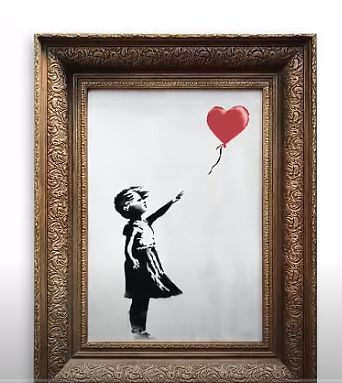
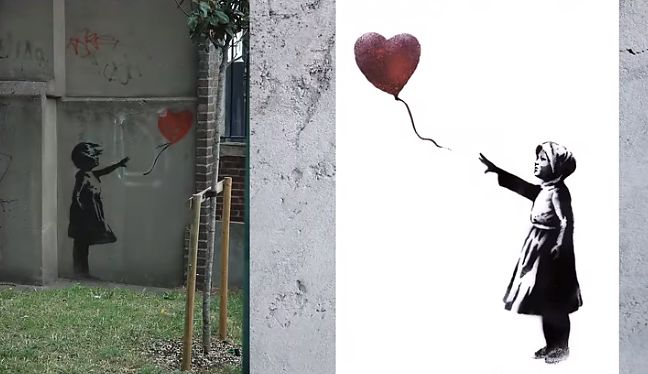
The shredding of Girl with Balloon (2002) and versions of Girl with Balloon
This painting, auctioned at a value of 8,000,000 TL, self-destructed live via a mechanism installed within it. Why did the artist include a self-destruct mechanism in the painting? This is a controversial issue. Was it to lower the price in an open auction or to create new creativity? This is a debatable point since the painting was sold at a price above its value. In this respect, it is controversial. On the other hand, after the auction, the painting's name was changed to "Love in the Bin" after the artwork self-destructed. This event points to vandalism with Picasso’s statement that ‘the urge to destroy is also a creative urge.’
Different versions of the same painting have been created in various countries. Notably, it was projected onto the Eiffel Tower in 2014 in support of refugees in Syria.
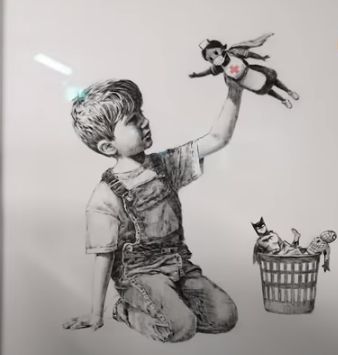
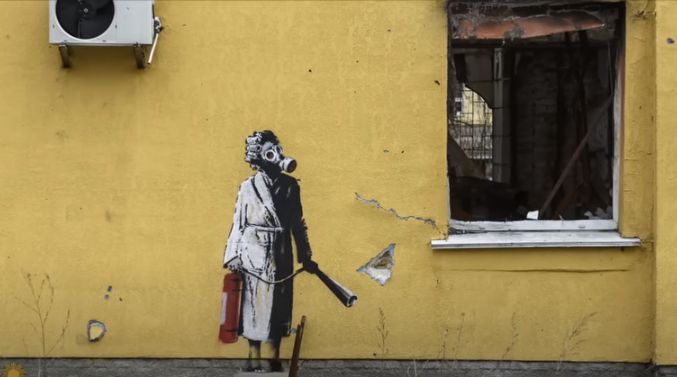
Pandemic-era painting (2020)
The proceeds from the painting made during the pandemic were donated to nurses and institutions working tirelessly. Other works from the pandemic period can also be seen.
Banksy also went to Gaza and created wall paintings that depict the war in Gaza.
Banksy's top 10 secretive wall paintings
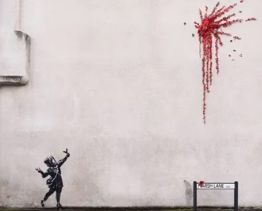
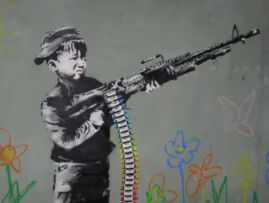
Valentine's Banksy Child Soldier
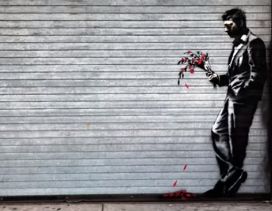

Man with Flowers No Future
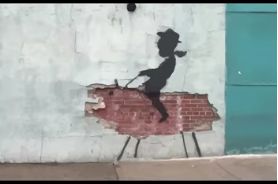
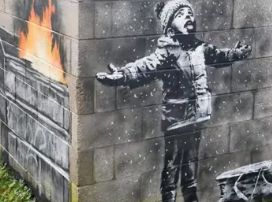
Rodeo Boy Seasons' Greeting
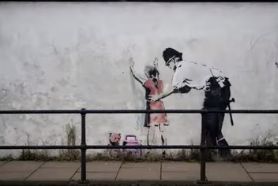
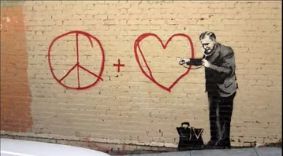
Policeman Searching Peaceful Hearts
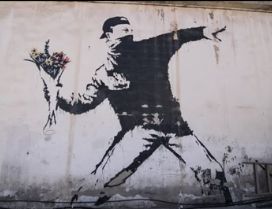
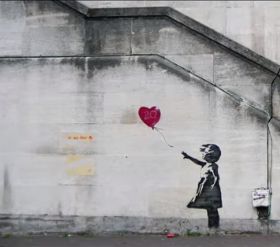
Girl with Pierced Earring Migrant Children
References
Banksy, (2005). Wall and Piece, The Random House Group Limited, Londn.
Güneş, Ş. (2009). Street Art, Artes Publishing, İstanbul.
Mutlu, S., (2010). “Banksy: Kentleri Sprey Boyayla Değiştiren Adam”, http://www.mimdap.org/w/?p=8396.
Özen, B., Eken, G. (2017). Sokak Sanatını Gizli Sanatçısı, Banksy, _ART-SANAT 8:, 499-519.
Selvi, Y., Koca, B. (2016). Banksy’i Anlamak, SDÜ ART-E Güzel Sanatlar Fakültesi Sanat Dergisi Kasım/Aralık’16 Cilt:9 Sayı:18 ISSN 1308-2698.
https://www.ntv.com.tr/galeri/sanat/banksy-kimdir-banksynin-en-cok-bilinen-12-eseri,ng4hV2EdiUmGBgtqsU-Jbg/0zo0aNn40UGnFJ3rR5NeXg
https://www.youtube.com/watch?v=m4uTlFLZZtk
https://www.e-skop.com/skopbulten/banksy-gazzede/2340
Mehtap Erdil
Yücel Cultural Foundation
Voluntary Author
YKV Content:1561